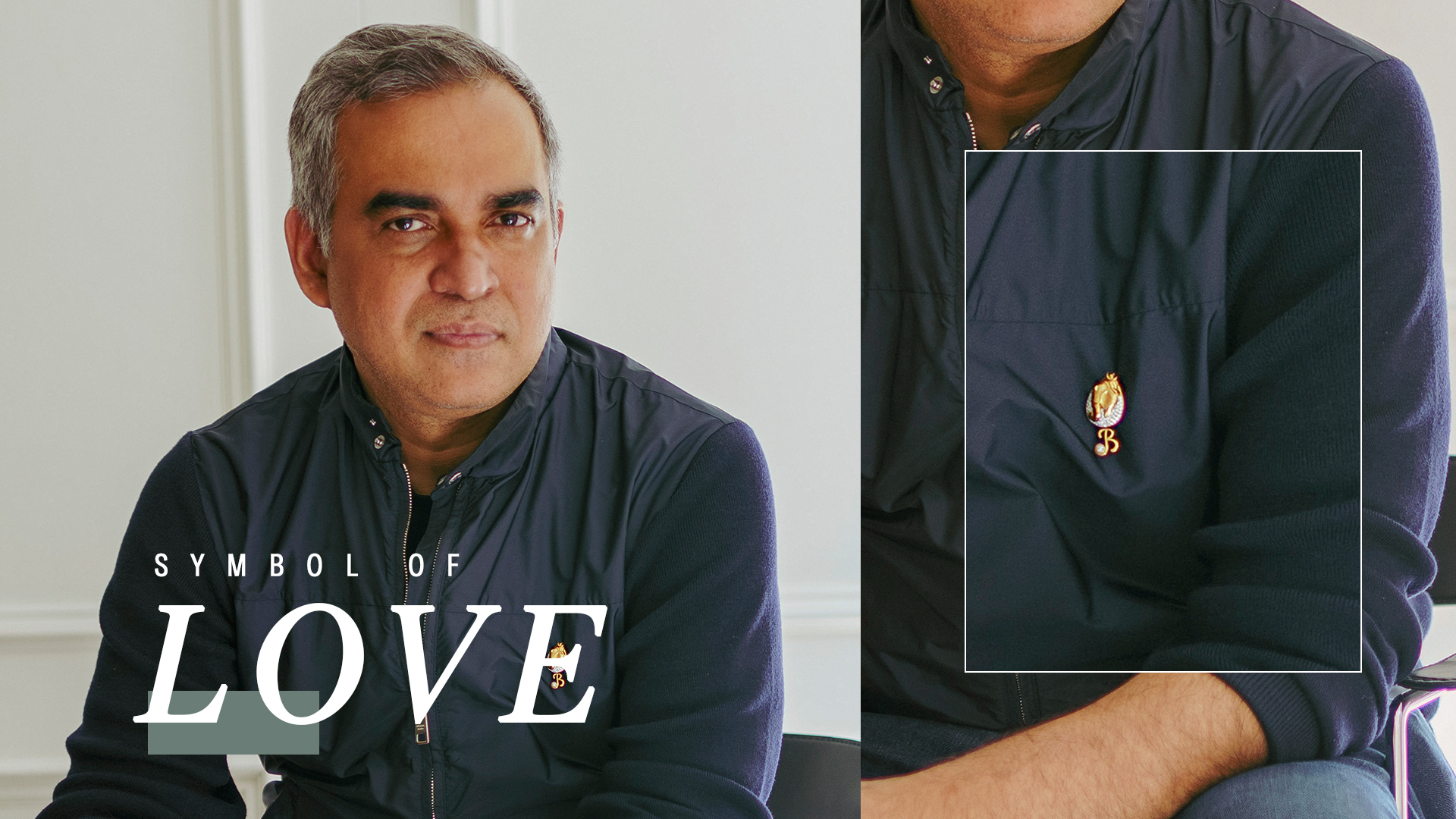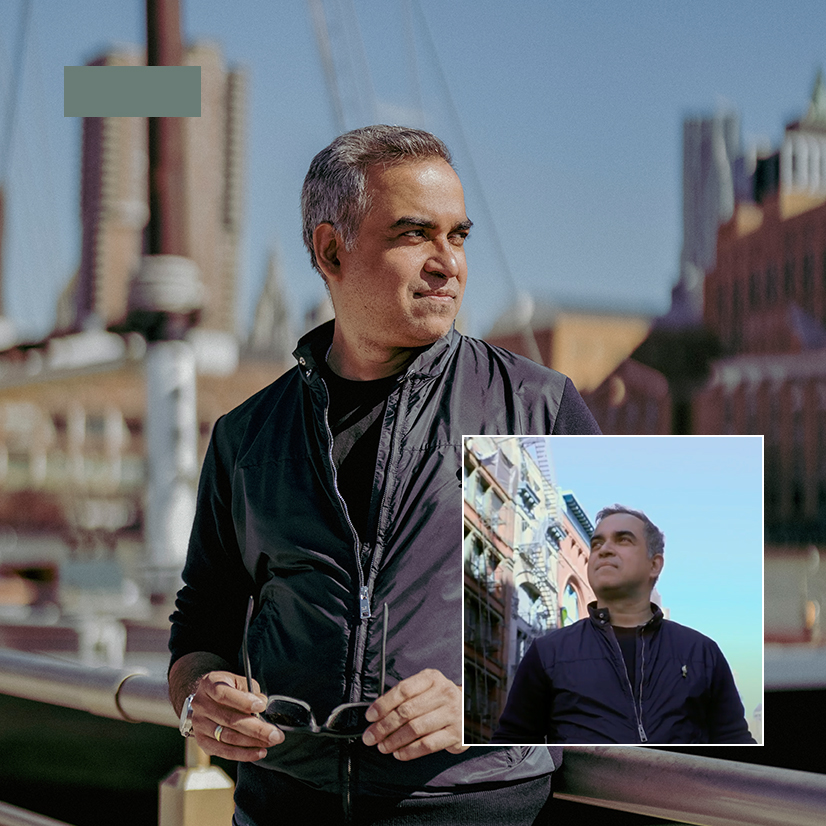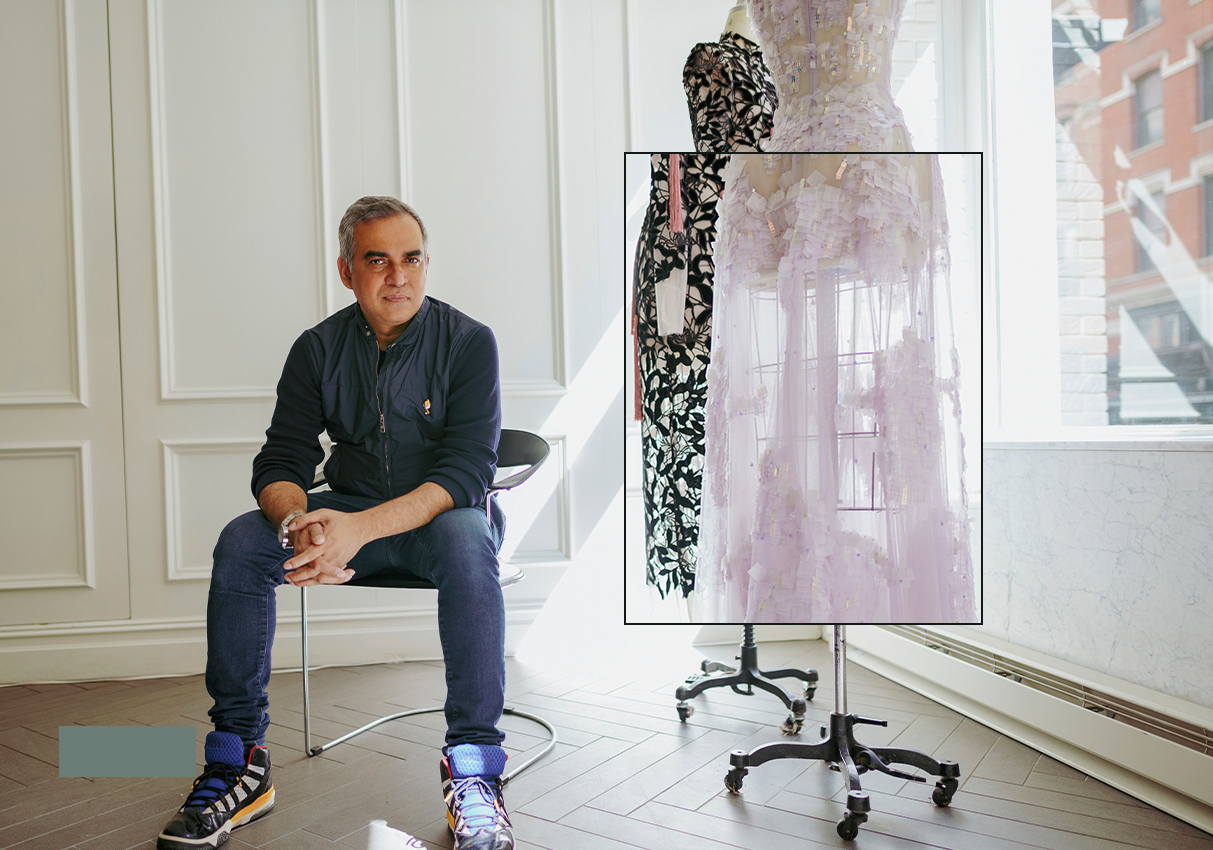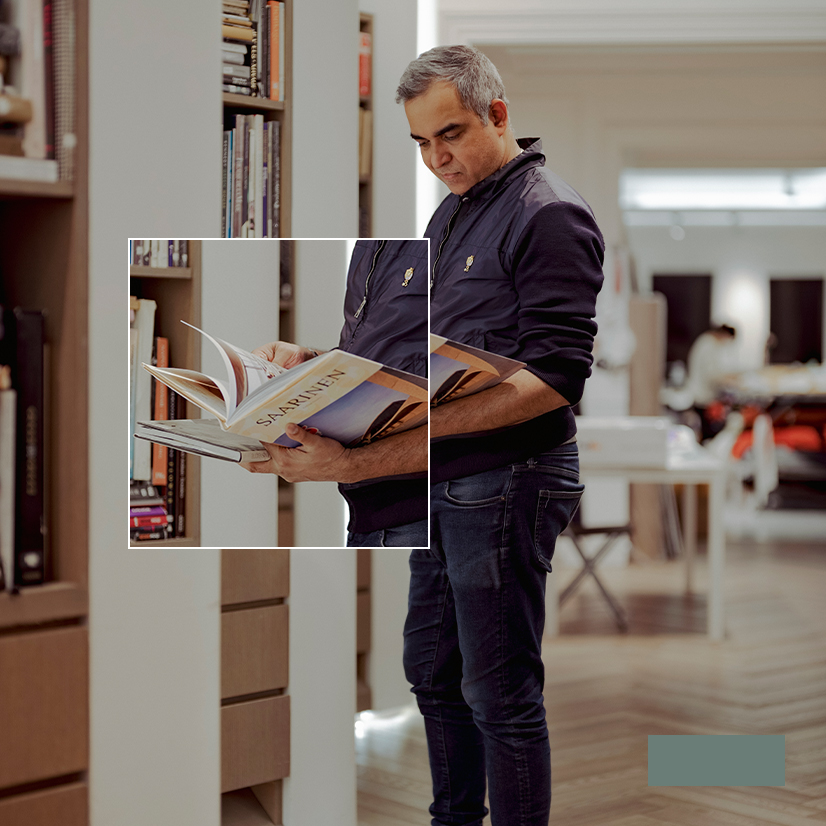In Conversation with Bibhu Mohapatra
For the designer, love is always the answer — whether it’s for New York City, the heritage of India, his decades-long relationship with his husband, or the legacy of his family, encapsulated in natural diamonds that have continued to shine for generations.

A member of the Natural Diamond Council Style Collective, Bibhu Mohapatra’s creative vision and relationship with jewellery, natural diamonds in particular, shaped our Trend Report for 2022.
What makes New York home for you, and how does the city continue to inspire you?
New York is my world now. It was always a dream and that dream became a reality thanks to many people who played a part in my journey. New York is ever-changing and being here means being a part of that evolution. It’s a big melting pot where you meet many people from different cultures, each of whom bring something new to the table — for a creative person, it’s the best place to be. It will always present something wonderful in the most unexpected place and the most unexpected time. You have to have the drive to pursue your dreams in New York and the city then makes it happen. The energy, the vibe, the resiliency of our great story shows in my designs. A broader vocabulary of fashion and style comes from just how diverse New York is.

What does style mean to you? And who is your style icon?
Our former First Lady Michelle Obama; I’ve had the opportunity to collaborate with her, meet with her, and dance with her. She always stays who she is, but also morphs into a beautiful version of herself when she collaborates with other designers. She never lets anything overpower her individuality. Style is an extension of who we are. It’s a language we develop over time with the clothes we wear, the art that we hang on our walls, the space we live in… they all contribute to who we are as a human being and how people see us.

How does India influence your designs?
My heritage runs through my veins. When I was growing up in Orissa, I was surrounded by incredible craft, beautiful textiles, jewellery and temples, and most of it I took for granted because I was born and raised there. But they gave me my basic foundations when it comes to aesthetics and creativity. As I was training in the West, my process of seeing and using colour always stayed with me. Crafts from India are very special to me; they have been perfected over centuries and it’s my responsibility to ensure they sustain for future generations.
When it comes to creating or investing in a piece of jewellery, what aspects ensure their lasting value?
Fine jewellery has the capacity to tell stories. That’s what makes them heirlooms. They can be passed through generations and can tell stories of the people who once owned those pieces. It’s like the story of a natural diamond, which is formed over billions of years and lives for the longest time. Natural diamonds represent commitment, the assurance of forever. My mother had a red fabric bundle with jewellery that belonged to the women in our family. When I touched those pieces, I felt I met all the women in my family — the diamonds shining as bright as when they were given by my great-great-great-grandfather.

What is the greatest act of love that you have witnessed and performed?
My brother Bijoy, who I lost a year ago to COVID, stayed in India while I came here. The love and care that he gave my parents when they were alive and to my sister-in-law Annie was immense. For me, when I met Bobby [Beard], the love of my life, 23 years ago, I had never been in a relationship before. But I had a gut feeling, a sense that it felt right. I could see myself better and I thought it must be something special and so I held on to it. About 10 years ago, when he was having surgery in New York — before we were married and before gay marriage was legal in this country — hospital staff called security on me since I wasn’t a relative and could only visit during visiting hours. I was chased down by two security guards and had to escape through freight elevators. The next day I moved him to a private suite where I then stayed with him. In that experience, I realised I was ready to take on anything to be with him. In their most difficult times, you want to drop everything and be in that situation with them.
In the past couple of years, where have you chosen to focus your energies?
The beginning of the pandemic was filled with anxiety. There was so much uncertainty; we didn’t know what to do or what would happen to the business and needed a purpose. We decided to make and donate masks because there was a scarcity of PPE. When it became clear that we weren’t going anywhere, I started cooking. My [late] brother would send me ingredients to make, say, South Indian food that we weren’t able to get in upstate New York, and I would experiment. I also had a lot of time to reflect, to question what’s the best way to move forward as a brand so we are mindful of the purpose behind what we do. At the same time, movements like Black Lives Matter shifted my thinking about myself, my work, and how I can use my voice.
Credits:
Photographer – Farhat Sikder
Videographer/Director – Oliver Chen
Production – By the gram
Jewellery and Outfit – Bibhu’s own
